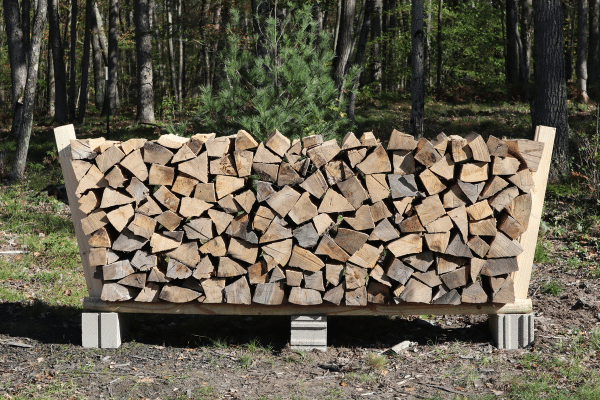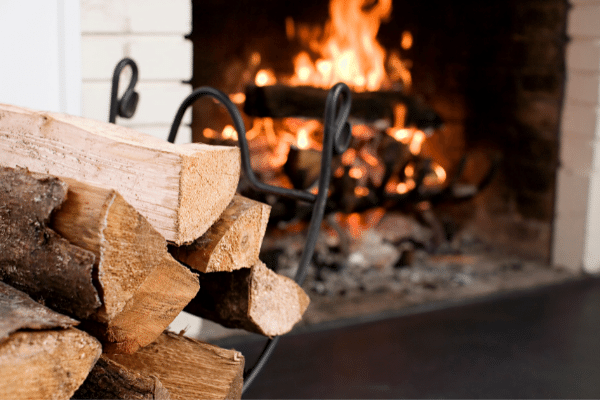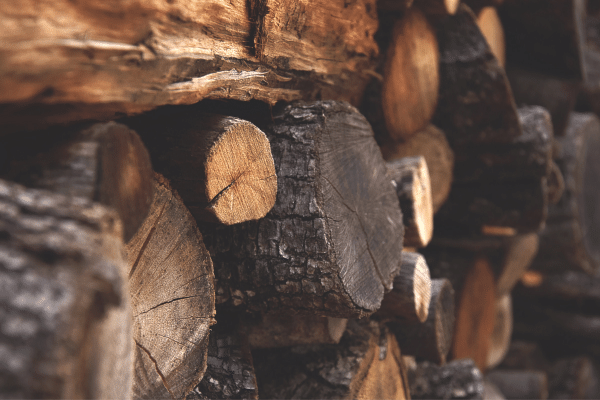- Home
- Storing Firewood
- Red Oak Firewood
Red Oak Firewood
This post may contain affiliate links so I earn a commission.
Red oak firewood has been a long-standing favorite among many as a premium choice of fuel for your wood stove, fireplace or fire pit.
Although it is a heavier, denser wood to handle, red oak has many outstanding features as a quality firewood - among its many other uses.
However, to make sure the wood burns correctly, there's a few important tips you should follow.
To learn more, let's take a closer look at the tree and what you can do to make sure your firewood is dry and ready to burn.
Red Oak Characteristics
The northern red oak, known by its scientific name Quercus Rubra, is native to North America.
Red oaks can grow in many areas of the eastern and central United States as well as south-central and southeast Canada.
Red oak is a fast grower and is a deciduous tree.
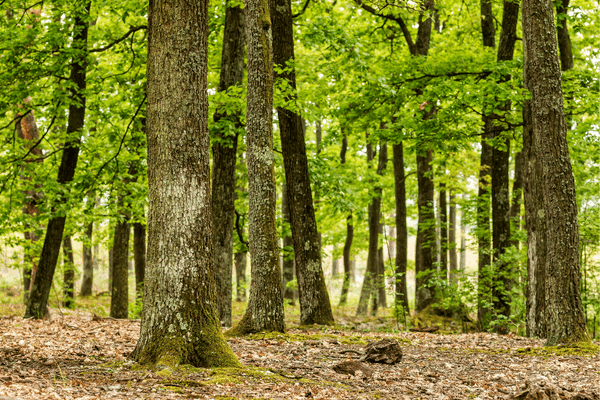
It's a tree that is particularly well-known in the fall, as the leaves turn to a russet-red color, adding a great deal of vibrant color to the landscape.
Growing to 60-90 feet in height and nearly two feet in diameter at maturity, red oak is also a full canopied tree.
It is often used as shade trees in public parks.
The canopy of this oak will often grow to 60-70 feet in width.
Durable under the pressures of strong wind and cold weather, red oak can sometimes live as long as 300 years.
It will typically look young, vibrant, and healthy for 150 years or more!
Leading in the list of prime firewood trees, northern red oak is also a leader in the lumber industry.
That’s because it has a beautiful color and extremely straight grain.
Red oak is highly valued in flooring and trim as well as industrial applications due to the woods incredible strength.
Growing Red Oak Trees
Fast growing, red oak can gain as much as 24 inches per year in height and be up to 60-90 feet tall at maturity.
The wide canopy of red oak reaches70 feet in width and it's distinguished by the unique leaves.
4-8 inches in length, red oak leaves will have 7-11 waxy spine-tipped lobes.
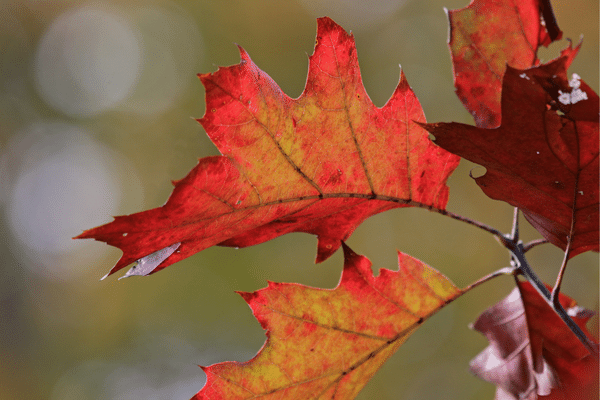
Preferring an acidic, loamy and well-drained soil, red oak can also be found thriving in a more clay-based soil as well.
It does best in moist soil conditions, however red oak is still considered fairly drought resistant.
Wildlife thrive when they have access to the acorns which drop in the fall.
Acorns are highly sought after by squirrels, deer, wild turkeys, and black bears as a food source.
Other varieties of red oak growing in the United States include:
- Willow Oak
- Pin Oak
- Live Oak
- Black Oak
However, northern red oak and southern red oak are the two most significant species.
Cutting And Seasoning Red Oak Firewood
Trees cut in the winter, after the sap has gone back to the roots, always have a lower moisture content in the wood.
This can be a valuable tool when cutting red oak firewood, as it is typically a very damp wood.
The curing time for red oak can be anywhere from six to 24 months but it is highly recommended that oak be seasoned for 24 months.
This will help this “wet wood” produce the optimum heat value.
It is a very dense wood that is prone to a higher moisture content and it simply requires that additional time.
Red oak, as with many hardwoods, will darken in color as it seasons.
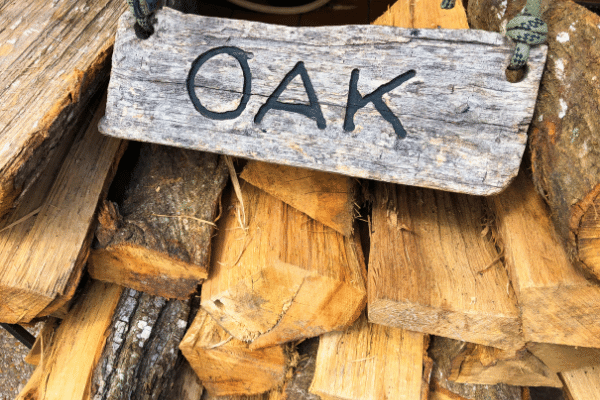
In many cases, a good dry piece of oak firewood will also lose its bark.
Weight is a big factor in determining how well oak has been dried.
Red oak firewood is heavy when it is freshly cut but loses considerable weight as it seasons.
Northern red oak is not a tree that naturally drips sap of any kind, but the flowers, or catkins as they are called are sometimes considered messy.
They will litter the ground as they shed.
Catkins, unless too abundant for individual preference, should never be raked up and disposed of in a landfill.
Simply mow or compost them.
They’re great for the soil!
Otherwise, the acorns and leaves, which fall from oak in autumn seem to be the primary complaint in regards to messiness.
Burning Red Oak Firewood
As with any well-seasoned firewood, red oak will produce very little smoke if burned and seasoned properly and when using the proper amount of draft.
Red oak is a very hot burning firewood which also is a factor in the small amount of smoke given off.
It will produce very minimal amounts of creosote - again, when properly seasoned.
A leader in efficient firewood, red oak will produce 24.6 million BTUs of heat per cord of wood.
According to many sources, red oak is one of the hottest burning woods and will hold a fire for an extended amount of time.
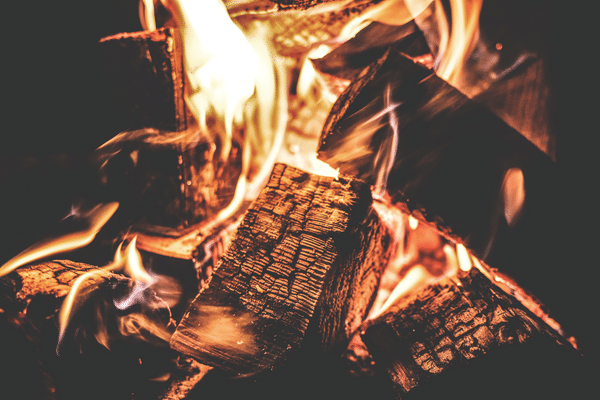
There is one downside to burning red oak firewood, and it’s this - due to the tannic acid present in red oak it can sometimes smell like vinegar when burned.
That’s especially true if it’s not fully seasoned.
Red oak has a reputation of being one of the “smelly” woods when burned, and you can also smell the wood when it's stacked and seasoning outside.
However, the smell seams to dissipate as the wood dries throughout the summer.
Although the wood does have an odor as it dries and as it burns, I wouldn't let that prevent you from burning red oak firewood.
In fact, red oak is one of my primary firewood choices.
As long as you split the wood, stack it off the ground in a sunny location, and give it about 24 months to season, it's an excellent firewood choice.
How Difficult Is It To Split Red Oak Firewood?
Red oak firewood is pretty easy to split.
The extremely straight grain allows you to split a round with a splitting axe or maul without much effort.
I split about 4 full cords of wood each year by hand using my Fiskars X27 splitting axe.

Sure it takes a little bit of effort and I spread it out over several weeks, but it's not that bad.
However, just like many other types of firewood, you'll occasionally find a tree that has twisted grain and just doesn't split as easily.
Or, of course any piece that is part of a "V" or crotch will be much more difficult.
Should you find yourself with the occasional oak that may split more difficult, a hydraulic splitter will make very easy work of those.
Stacking Red Oak Firewood
Since red oak is notorious for taking longer to dry compared to other types of firewood, it's important to split and stack the wood as soon as possible.
Splitting the wood into small pieces will allow the wood to dry even faster.
I've cut red oak tops that have been sitting in the woods for 3-4 years after the trees have been logged only to find the wood is still extremely wet.
Once your red oak firewood has been split, stack the wood in a sunny location that's not sheltered from the wind.
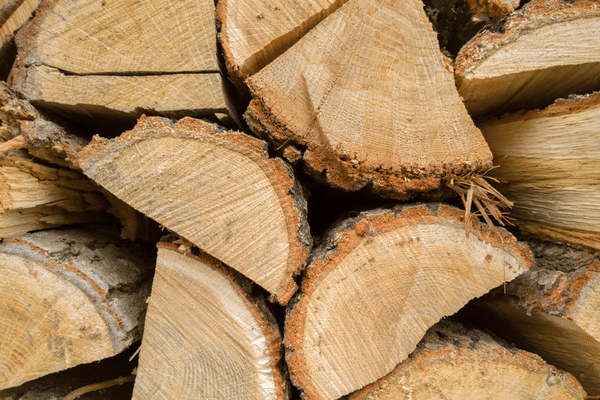
The warm summer breeze will help dry out the firewood much faster, as opposed to a shady location that's sheltered.
It's important to elevate the wood on some 2x4's or other similar structure when you stack it.
This not only reduces the chances of insects and rodents living in your firewood, but it also allows the wind to reach all sides of the stack, drying out the firewood faster.
And finally, don't forget to place a cover or tarp over the top 1/3 portion of the stack.
You don't want to cover the entire stack because you need room for the moisture to escape, but coving the top of the stack will shed rain and snow.
Other Uses for Red Oak
Red oak is considered a very versatile wood in many ways.
It is possibly one of the most versatile species of hardwood.
As lumber, red oak is found to have a very tight and straight grain.
This makes it quite desirable in fine furniture, flooring, stair systems and many other applications.
As oak is considered to be a strong wood in general, it is often used in industrial applications.
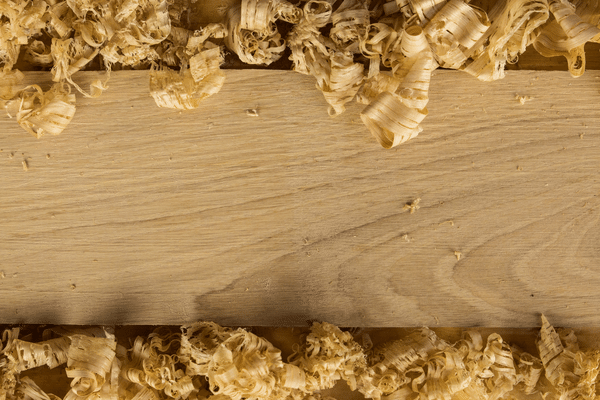
Red oak is an excellent choice in the manufacture of pallets, load-bearing beams, and any other place where a strong wood is required.
Red oak ash from your wood stove is very high in lime and potassium, as well as many other trace elements.
Oak ashes can be lightly scattered if applied directly to your garden.
Composting the ashes first is considered a better plan if possible, which will help you gain a more balanced fertilizer.
Finding Red Oak Firewood Near You
Red oak firewood may be one of the most attainable firewoods to come by.
Grown in wide areas of the US, it can be plentiful for many folks.
Ask around!
Often the very best source is going to be a happy customer who has dealt with certain vendors.
Red oak firewood is a great firewood choice.
There's a reason why it's known as the "Mighty Oak" and its firewood reputation is no exception!
